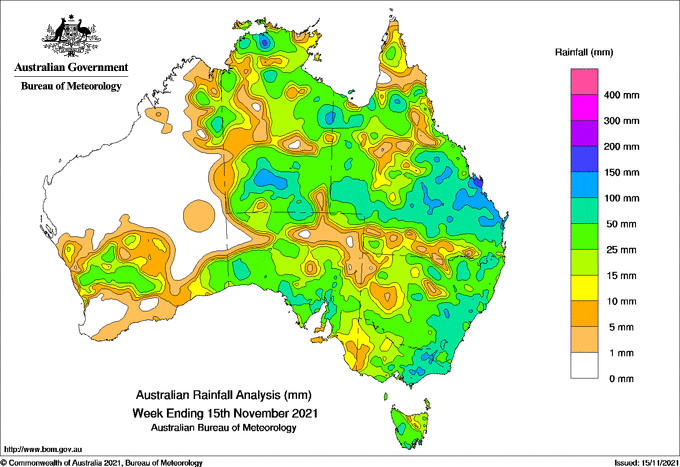
HEAVY rains across eastern Australia’s cropping zones over the past week have interrupted harvest and caused lodging and potential crop downgrade issues in the hardest hit areas.
Falls of between 50 and 150 millimetres were recorded in many Queensland, New South Wales and South Australian farming regions where harvest is at various stages or crops are nearing maturity.
The wet weather disrupted harvest across southern Queensland and northern New South Wales and led to flooding issues in some regions such as the Macintyre Valley on the state border and the Lachlan River in Central West NSW.
Eastern grain receival and storage operator, GrainCorp, said the rain had caused a stop-start harvest in NSW and delayed receivals in several areas, but activity was expected to pick up again this week as the skies cleared.
In southern Queensland, where fine weather returned on the weekend but ground conditions remain very wet, GrainCorp said growers were continuing to deliver to its receival sites, including from on-farm storages. Activity was expected to wind down within the next fortnight.
In Victoria, where it was still early days with only 15,500 tonnes of grain delivered into GrainCorp storages so far, growers were expected to take advantage of a clearer forecast this week to make a start on harvest.
GrainCorp has taken 2.536 million tonnes (Mt) in total into its eastern storages so far this season, with the Queensland intake at 1.37Mt and NSW 1.150Mt.

In southern Queensland where the skies cleared on Friday, AgForce grains president Brendan Taylor said about 70 per cent of the harvest had been completed and it was too early to tell what impact the rain had had on the crops still to be taken off.
“I’ll be surprised if there aren’t some quality issues on grain that was really ripe and had a big fall of rain on it, whether that is discolouration or sprouting or even potentially grain that has shelled out and been lost,” he said.
“And you have significant ground moisture now which makes harvesting problematic because it is too wet for headers and trucks.
“Realistically we need three weeks of fine weather to let the ground dry and people get back into their paddocks. This week is unseasonally cool with 10-degree nights and 22-degree days, but by the weekend they are talking mid-30s.”
On the plus side, Mr Taylor said the summer crop that was in the ground had benefitted greatly from the rain and there would be a lot more go in on the back of the boost to soil moisture levels.
He said there had also been beneficial falls in other parts of the state that had been dry, such as the Burnett and Central Queensland.
In the border area, Macintyre Independent Agronomists director, David Kelly, said the rain hadn’t been good news for growers in the midst of harvest, but with the finer weather some harvesters were getting going again.
He said grain quality had deteriorated to varying degrees in crops adversely affected by the rain.
On the Liverpool Plains, Gunnedah grower Keith Perrett said more than 100mm of rain in recent weeks was likely to downgrade a lot of grain crops, which were in the middle of harvest.
“With the wind on the weekend, we’ve seen shelling in some of the wheat, a lot of canola still hasn’t been harvested and I would hate to think of the damage to those crops,” Mr Perrett said.
“It always cost a bit more money in years like this, because you have to apply more nitrogen and deal with some other issues.”
Mr Perrett said despite the recent setbacks, the season was a success.
“It’s been a brilliant yield and we haven’t seen yields like this with some varieties,” he said.
“With the yields being so good and feedgrain prices being pretty good, it has been a saving grace.”
In Central West NSW where floodwaters are moving down the Lachlan River, IMAG Consulting agronomist at Forbes, Cameron Corke, said the rain had come when most of the crops were still green, but nearing harvest.
“We were just on the verge of starting canola. Now it has become wet we have to wait for moisture levels to drop. It will be an issue of trafficability and where we can drive. It will delay harvest,” he said.
“With cereals, it will be all over the place in terms of quality. But no-one has really started harvest, so we are not sure at this point in time how big the impact will be. It will probably affect grain weights, but we don’t know at this stage whether it will be shot and sprung.”
Grain Central: Get our free cropping news straight to your inbox – Click here



HAVE YOUR SAY